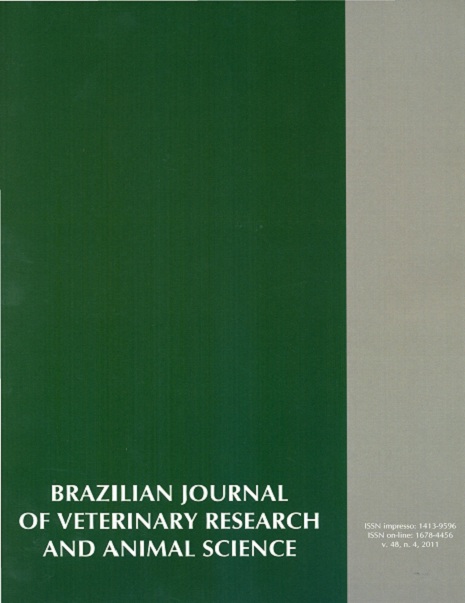Clinical exam protocol for the equine thoracolumbar spine
DOI:
https://doi.org/10.11606/S1413-95962011000400001Keywords:
Back Pain, Clinical exam, Spine, UltrasonographyAbstract
Thoracolumbar injuries represent a challenge to the veterinarian that seeks to eliminate the pain, reinstitute the athletic use of the horse and minimize economic losses. The percentage of lost training days due to orthopedic conditions in race horses is of 72.1% and within those conditions is back pain, whicht represents from 4.35% to 20% of the lameness cases. The present study searched to establish a protocol based on score points for the thoracolumbar physical exam, by which it is able to determine the possible affected areas and the seriousness of the injuries. Along with the physical exam, it was performed an ultrasonographic exam of the thoracolumbar region to characterize and classify the injuries found, as to accompany its evolution after treatment. It was observed a clear reduction in the physical exam score sum in all animals between the exam days being that the exam of most of the animals presented a zero score at 60 days after the treatment. Relating the evolution of the clinical exam with the ultrasonography image tests, there was a positive association between the reduction score in the severity scale and the evolution of the ultrasonographic image of the evaluated structures. Thus, it can be concluded that gradation of the physical exam showed to be efficient and allowed the monitoring of the clinical evolution, as the answer of the injuries to the suggested treatment. Besides that, the results showed that 60 days is the ideal time for the first reevaluation of the animal after the treatment.Downloads
Downloads
Published
2011-08-01
Issue
Section
UNDEFINIED
License
The journal content is authorized under the Creative Commons BY-NC-SA license (summary of the license: https://
How to Cite
1.
Fonseca BPA da, Alves ALG, Hussni CA. Clinical exam protocol for the equine thoracolumbar spine. Braz. J. Vet. Res. Anim. Sci. [Internet]. 2011 Aug. 1 [cited 2025 Mar. 19];48(4):271-80. Available from: https://revistas.usp.br/bjvras/article/view/34390





